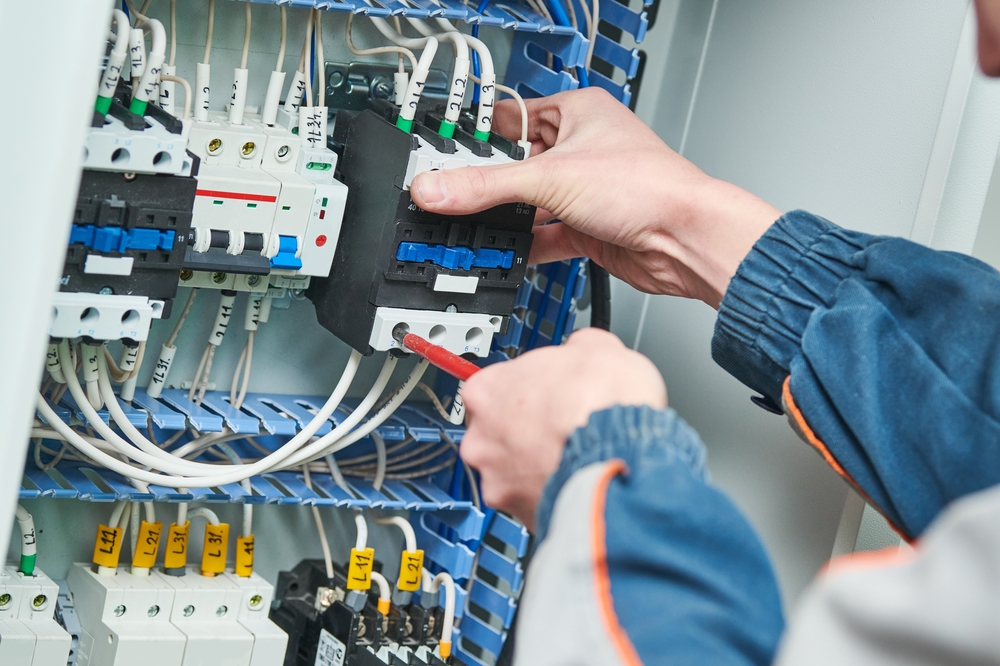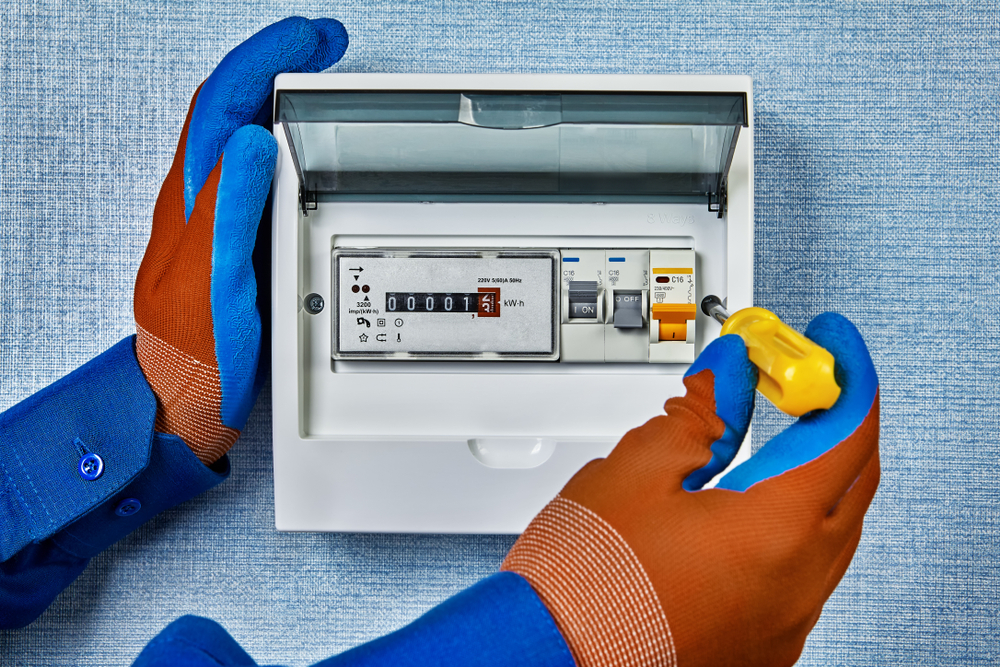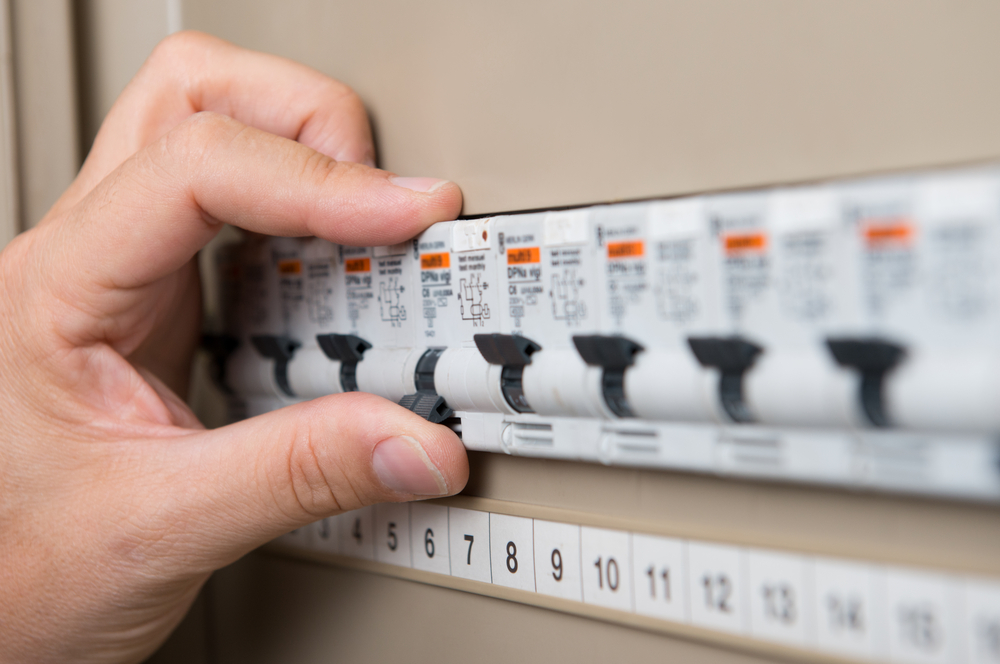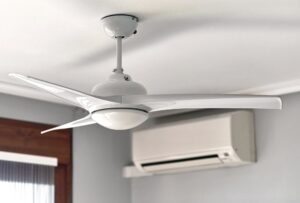How Circuit Breakers Work: Basics and Functions
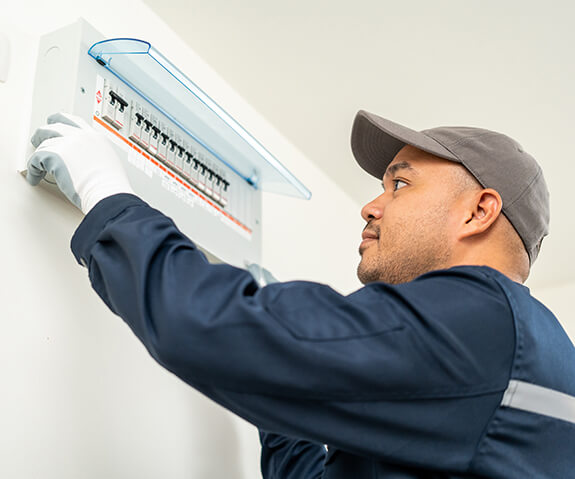
Becoming acquainted with the symptoms of a faulty circuit breaker and understanding its basic functions and components is the next step. A circuit breaker is an automatically operated electrical switch designed to protect wiring and prevent fire hazards by instantly cutting off electricity when an overload or short occurs. The main intent of circuit breakers is to disrupt the current in case of an overload or a short circuit. This works by cutting off the power supply and preventing any further damage.
Understanding the basics and functions of circuit breakers allows you to identify possible issues, troubleshoot them, and prevent problems. We’ll cover the components and types of circuit breakers, along with the safety mechanisms and protection they offer, in more detail.
Components and Types of Circuit Breakers
There are various types of circuit breakers available, such as:
- Standard
- Arc-fault circuit interrupter (AFCI)
- Ground fault circuit interrupter (GFCI)
- Residual current device (RCD)
- Miniature (MCB)
- Molded case (MCCB)
- Air (ACB)
- Vacuum (VCB)
- Oil (OCB)
- Sulphur hexafluoride (SF6) circuit breakers
These different types provide varying levels of protection and have distinct components, including a frame, operating mechanism, contacts, arc extinguisher, and trip unit.
The components of a circuit breaker and their functions are:
- Frame: Provides stability to the circuit breaker.
- Operating mechanism: Enables manual or automatic operation of the circuit breaker.
- Contacts: Make and break the electrical circuit.
- Arc extinguisher: Helps extinguish any arcs that may occur during circuit interruption.
- Trip unit: Detects faults and initiates the opening of the circuit breaker.
Being aware of these components is fundamental for maintaining and troubleshooting your circuit breakers.
Safety Mechanisms and Protection
Circuit breakers provide safety and protection against electrical hazards by interrupting the power supply in the event of overloads or short circuits. A short circuit is risky, as it can lead to a fire or electric shock. Circuit breakers are equipped with various mechanisms, such as:
- Trip units
- Protective relay pilot devices
- Solenoid coils
- Electromagnetic mechanisms
- Bimetallic strips
These components can be found within a circuit breaker box, ensuring the safe operation of your electrical system.
These mechanisms sense abnormal electric current flow and instantly trip the circuit, preventing damage and safety hazards.
Thermal protection in circuit breakers is designed to detect and protect against excessive heat caused by overloads in an electrical circuit. This is achieved by using a bimetallic strip that bends when heated to a certain temperature, resulting in the circuit breaker tripping and interrupting the current flow. This helps to prevent damage to the circuit and potential fire hazards.
Troubleshooting a Bad Circuit Breaker
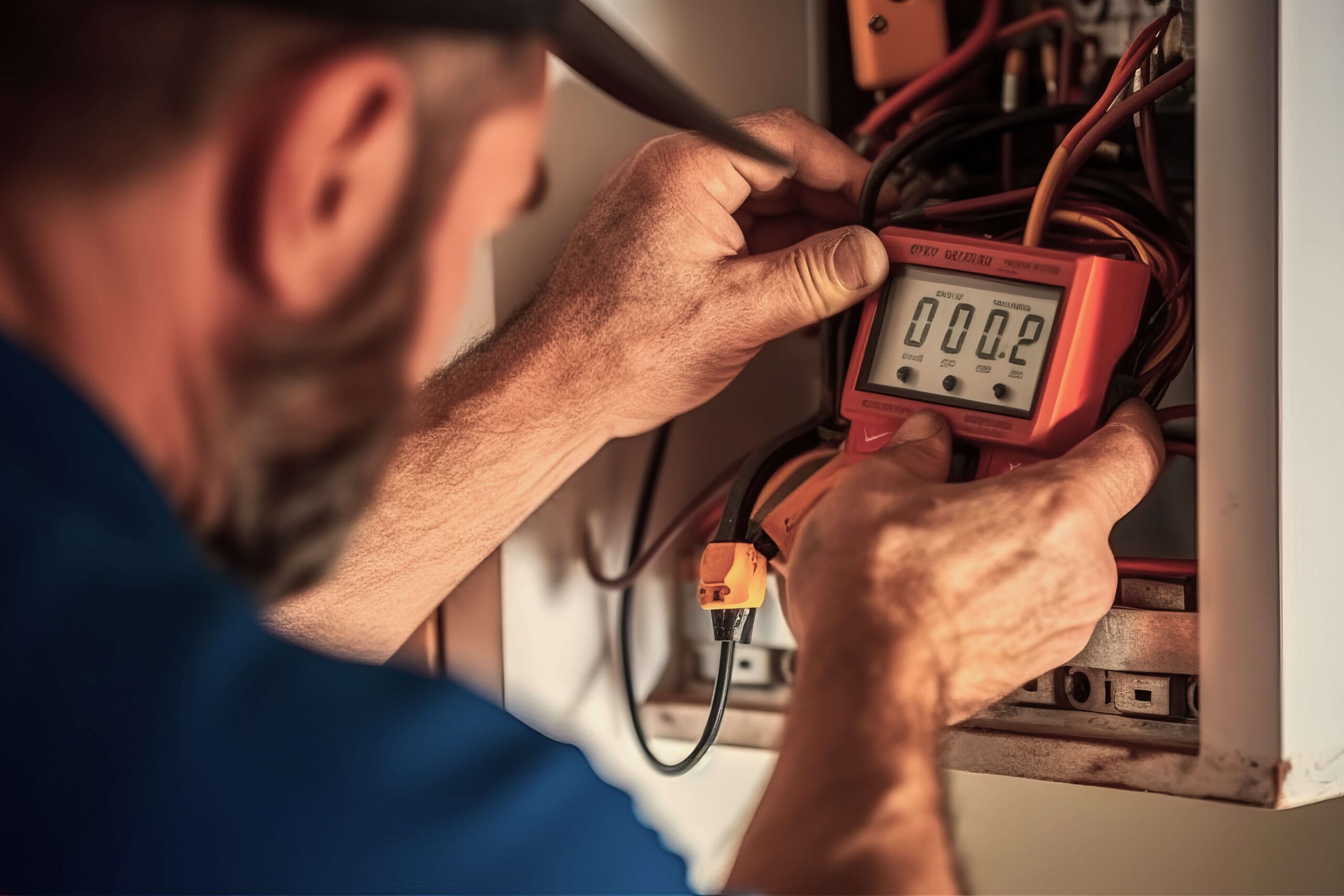
When dealing with a possible issue with your circuit breaker, troubleshooting the problem before calling a professional electrician is important. By following simple troubleshooting steps, you can often identify the issue yourself and determine whether it’s a problem with the breaker or the electrical system. This section will discuss two common methods for troubleshooting a bad circuit breaker: resetting the breaker and testing with a multimeter.
Resetting the circuit breaker can help determine if the problem is with the breaker or the electrical system. If resetting the breaker doesn’t resolve the issue, or if the breaker trips immediately after being reset, it’s time to move on to the next troubleshooting step: testing with a multimeter.
Resetting the Circuit Breaker
Before attempting to reset a tripped circuit breaker, it’s essential to follow these steps:
- Turn off all lights and appliances connected to the affected circuit. This helps prevent the circuit breaker from being overloaded again upon resetting and helps you identify the appliance that caused the overload.
- Move the switch to the “off” position.
- Then, move it back to the “on” position to reset the circuit breaker.
If the circuit breaker successfully resets and restores power to the circuit, the problem may have been a temporary overload or a single faulty appliance. However, if the breaker trips again soon after being reset, there may be a more serious issue with the breaker or the electrical system. In this case, it’s best to consult a professional electrician for further assistance.
Testing with a Multimeter
A digital multimeter is useful for examining circuit breakers and pinpointing potential issues. Following the proper procedure, you can confirm if your faulty circuit breaker needs replacement. To test a circuit breaker with a multimeter, you should:
- Set up the multimeter to the appropriate setting.
- Make sure the main breaker is switched off for safety.
- Remove the panel cover to access the breaker.
- Place one probe on the terminal screw of the breaker.
- Place the other probe on a ground screw or metal bar along the panel.
- Observe the multimeter reading.
The circuit breaker functions correctly if the multimeter shows continuity or a low resistance value. On the other hand, if there is no continuity or a high resistance value, the circuit breaker may be defective and need replacement. In this case, it’s best to consult a licensed electrician for assistance.
Preventing Circuit Breaker Problems
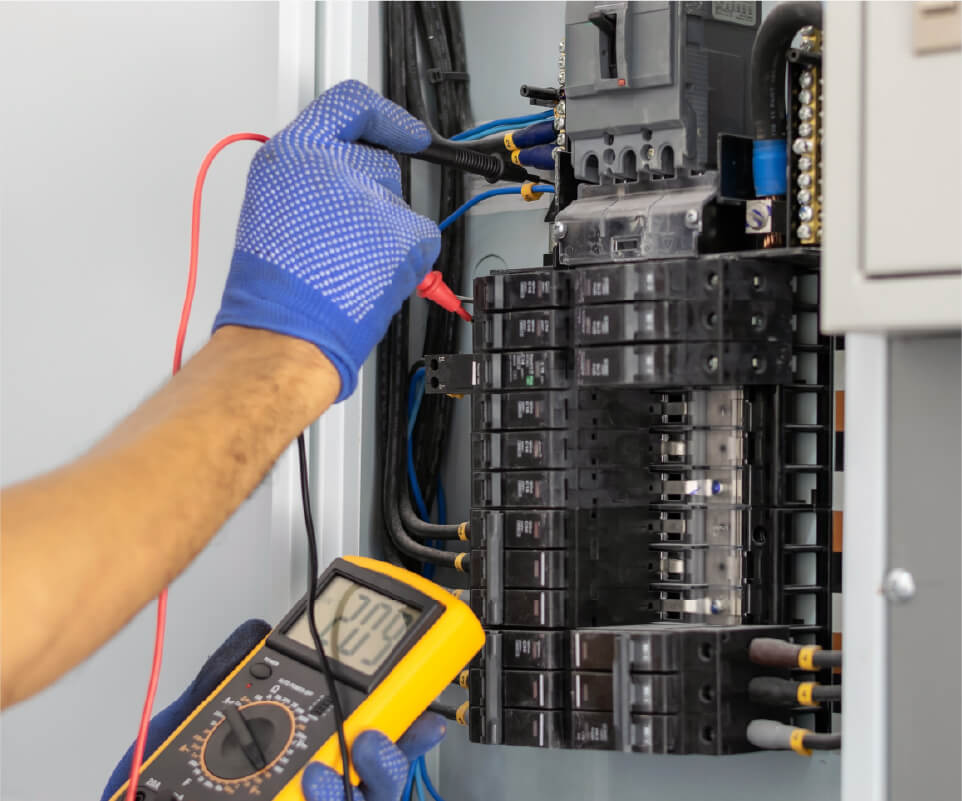
Prevention is better than cure, especially when it comes to your home’s electrical system. By taking proactive measures, you can prevent many circuit breaker problems before they occur. This saves you time and money on repairs and ensures the safety of your family and property. This section will discuss two key strategies for preventing circuit breaker problems: avoiding overloaded circuits and performing regular inspections and maintenance.
Following these simple preventive measures helps keep your circuit breakers functioning optimally, protects your home from electrical hazards, and saves time and money on repairs in the long run.
Avoiding Overloaded Circuits
An overloaded circuit is one of the most common causes of circuit breaker problems. High-load appliances, such as dishwashers, ovens, and washing machines, can overload a circuit if connected to the same outlet or circuit. To prevent overloading, you must distribute high-load appliances across different outlets and circuits in your home.
Careful management of electrical appliance distribution can prevent undue strain on your circuit breakers and electrical system, reducing the risk of tripping and other issues. Remember, prevention is key to maintaining a safe and efficient electrical system.
Regular Inspections and Maintenance
Regular inspection and maintenance of your circuit breakers are essential to ensure their proper functioning and safety. It’s generally suggested that a circuit breaker be inspected at least every three to five years. During these inspections, you should:
- Test the circuit breaker’s ability to detect an overcurrent and trip
- Perform dielectric tests to check power frequency and impulse voltage withstand capacity
- Check each breaker’s operation annually
In addition to inspections, proper maintenance tasks such as:
- Cleaning
- Checking electrical connections
- Performance tests
- Measuring contact resistance
It should be performed regularly. By adhering to a regular inspection and maintenance schedule, you can help ensure the reliability and safety of your home’s electrical system.
When to Call a Licensed Electrician

While proactive in identifying and addressing circuit breaker issues is vital, there are instances when consulting a licensed electrician is the best course of action. Signs that may indicate the need for professional assistance include frequent tripping, burning smells, or physical damage. A licensed electrician can assess the situation for possible bad connections, short circuits, open grounds, rodent damage, and other potential causes of the circuit breaker not resetting. They can replace a defective breaker and carry out other necessary repairs.
If you’re unsure about the severity of a circuit breaker issue or if your troubleshooting efforts have been unsuccessful, it’s always best to err on the side of caution and call an electrician. Always remember the electrical safety of your home should be prioritized.
Summary
In conclusion, understanding the signs of a faulty circuit breaker, knowing how they function, and learning how to troubleshoot and prevent issues are essential to maintaining a safe and efficient electrical system in your home. By paying attention to frequent tripping, overheating, burning smells, and physical damage, you can identify and address potential problems before they escalate.
Prevention is key, so avoid overloaded circuits and perform regular inspections and maintenance. When in doubt, consult a licensed electrician for circuit breaker repairs to ensure the safety of your home and loved ones. Remember, knowledge is power, and by being informed, you can protect your home, family, and appliances from potential electrical hazards.
Frequently Asked Questions
How do you know if your circuit breaker is bad?
If you notice the breaker tripping frequently, the switch flops back and forth without a definite “on” or “off” position, or if it fails to trip immediately when overloaded, your circuit breaker may be bad.
Can a circuit breaker be bad without tripping?
A circuit breaker can be bad without tripping, indicating it needs to be replaced or there may be wiring issues with the circuit.
What happens when your circuit breaker goes out?
When a circuit breaker trips, too much electricity flows through the circuit, posing a risk of fire or electrocution. To prevent this, finding the source of the overload and fixing it as soon as possible is important.
What is the difference between a circuit breaker and a RCD?
A circuit breaker protects the electrical systems and wiring in a home, while an RCD switch is designed to protect people from electrocution.
How do I reset a tripped circuit breaker?
To reset a tripped circuit breaker, switch it to the “off” position and back to the “on” position.
How much should it cost to replace a circuit breaker?
Replacing a circuit breaker switch typically costs between $100 and $300, including parts and labour. Larger 20-amp switches cost $10 to $20 each, and installing a circuit breaker typically costs between $300 and $2,000.
